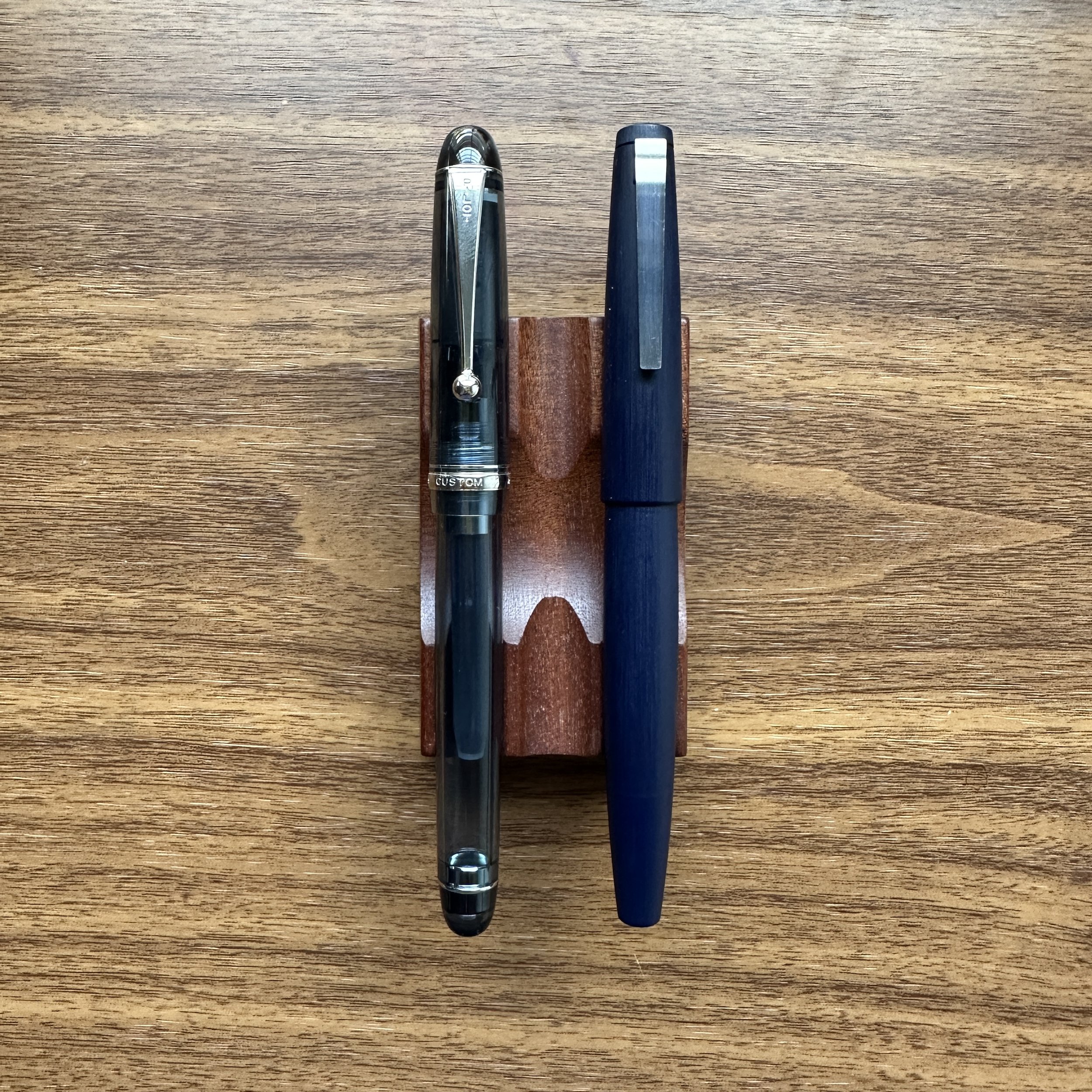A handful of iconic fountain pens appear on everyone’s “you-need-to-try-it-at-least-once” list. The Pilot Vanishing Point is one of those pens. Not only has it been around since the 1960s, making the original design approximately the same vintage as the Lamy 2000, but after all these years it remains the default option for a retractable nib fountain pen.
I did a review of the Pilot Decimo several years ago, so I won’t go into the nuts-and-bolts details again. I will, however, spend today’s post talking about 5 specific things to understand about the Vanishing Point and Decimo, including what I consider to be key differences between the classic VP and the slimmer Decimo, and how those differences have impacted the pens’ functionality for me over the years. The purpose here isn’t to say that one is better than the other - it’s purely a matter of preference and what will work for you based on how you hold and intend to use the pen. Both pens are the same price, after all, so it’s not a question of saving money by going for one as opposed to the other.
No, this “Harvest Green/Yellow” color isn’t available anymore. And no, my pen is not for sale. :)
Vanishing Point vs. Decimo: 5 Considerations
Both Pens Use the Same Nib, Cartridge, and Converter. Since the Pilot Vanishing Point and the Pilot Decimo use the same nib units, ink cartridge, and converter system, you can experiment with both pens without worrying that your parts and accessories will only fit one or the other. This also means that you can easily move nib units between pens, and purchase additional nib units for more versatility without accumulating additional pens that you won’t use. As an aside, you can check out this short video showing how to install a cartridge in both pens. (They work the same way.)
The Decimo is Slimmer. The Decimo is lighter weight and slimmer than the Vanishing Point, which means that it will fit many people’s hands better. This is purely a matter of personal preference, since the pens otherwise function in the same manner and use identical components, as noted above.
Both Pens Feature the Same Clip (But Consider…). One “controversial” aspect of both the Pilot Vanishing Point and Decimo is the clip placement. The clip necessarily has to sit on the nib end, since the pen must be carried nib-up, but some find that it interferes with their grip due to finger placement. This is yet another matter of personal preference, but I tend to find the Decimo more comfortable because the slimmer barrel alters how the clip fits in my grip. (And, yes, you can remove the clip entirely, but understand that it will void your warranty.)
The Decimo Fits More “Pen Loops,” Including on Plotters. One reason I absolutely love the Decimo is that it fits my Plotter pen loop and in most other planners. The extra-fine nib writes well on most papers, regardless of quality. This makes it a perfect “planner pen” for me.
The Vanishing Point Comes in a Wider Range of Colors. If you’re looking for matte black trim or the iridescent “carbonesque” finishes, you’ll be limited to the Vanishing Point model. That said, Pilot periodically releases Japan-only Decimos in gradients and other unique finishes, though you may have to pay a premium.
A comparison between Vanishing Point/Decimo nibs (top) and the E95s nib (bottom).
TLDR Version: Pilot’s retractable nib Vanishing Point and Decimo Capless fountain pens are the best version of the “Retractable Nib Fountain Pens” product segment. Over the years, I’ve gravitated towards the Decimo, since a slimmer pen better fits how I use retractable fountain pens, but I do own and use both. As you can see from the photos, I’m also experimenting with the E95s, which is not retractable but highly portable, and which also features an excellent inlaid nib that’s the spiritual successor to the Pilot Myu.
We currently carry select models of the Pilot Vanishing Point (Matte-Black Trim and Carbonesque) and Decimo, with most nib sizes available in pens and as separate nib units. If you enjoy our content, we are entirely self-supported through our online shop and physical store, as well as the T.G.S. Patreon Program.

